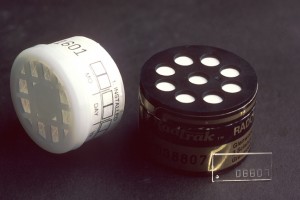 Gretchen Polhemus host of Good Things Utah had John Seidel, owner of Radon Be Gone, visit her home and test for the presence of radon. The move was an effort to help boost awareness about the deadly gas, which many have no clue even exists. Despite that, it’s responsible for the deaths of more than 20,000 Americans each year. This is because it’s the second leading cause of lung cancer, the first in non-smokers.
Gretchen Polhemus host of Good Things Utah had John Seidel, owner of Radon Be Gone, visit her home and test for the presence of radon. The move was an effort to help boost awareness about the deadly gas, which many have no clue even exists. Despite that, it’s responsible for the deaths of more than 20,000 Americans each year. This is because it’s the second leading cause of lung cancer, the first in non-smokers.
Gretchen’s home was found to have levels of 2.1 pCi/L, which is below the recommended action limit as set by the U.S. EPA. If levels are discovered to be above that in a home, then a mitigation system needs to be installed which ventilates the gas.
However, one thing we always talk about here at Radon Resources is that any home can be susceptible to the gas, new or old. In addition, just because your neighbor doesn’t have elevated radon levels, doesn’t mean they can’t exist in your own home.
Every Home Should Be Tested for Elevated Radon Levels
In the case of Gretchen’s neighbors, Seidel tested two other homes in her neighborhood and found dangerously high elevated radon levels. One of the homes was found to have levels three times the recommended limit, equal to smoking almost an entire pack of cigarettes per day. Each additional 15 pCi/L in a home is equal to smoking a full pack of cigarettes.
Believe it or not, if elevated radon levels are discovered it’s relatively inexpensive and a fairly easy fix too. A few people are too scared to test because they’re afraid the entire process will be costly. If you don’t want to pay for an experienced radon professional to test, you can always purchase a DIY radon testing kit at local hardware stores and online. However, we certainly recommend hiring a professional contractor to install a radon mitigation system. If it’s not installed properly it can just make the elevated radon levels much worse.
If Elevated Radon Levels are Discovered…
In most cases, a professional radon mitigation contractor will drill a hole in the foundation, and run a pipe to the roof – either through the house or on the exterior – with an attached fan that helps ventilate the gas. The radon gas is then released into the open air where it disperses, no longer a serious health hazard for anyone including the residents. Of course, the area surrounding the vent is hazardous and so can any leaks in the pipe. This is why regular maintenance and subsequent tests are required to ensure the system is working properly.
In Utah, where Gretchen and Seidel are located, the risk of radon is quite high. It is estimated that every one in thirteen homes in the state have elevated radon levels, unbeknownst to residents. It’s not a problem that’s just isolated to Utah, either. Radon is a problem everywhere, since it’s released naturally by elements commonly found in soil and rock in the ground, such as Uranium.
The moral of the story here – as always – is to have your home tested for radon, or conduct a test yourself. Radon causes the most damage over an extended period of time. Symptoms of lung cancer won’t even show until later stages of the disease. This means the sooner you have your home tested and fixed – if there is a problem – the more likely your family will live a long, happy and healthy life.
Via: Good 4 Utah


